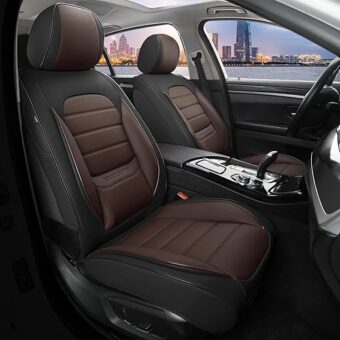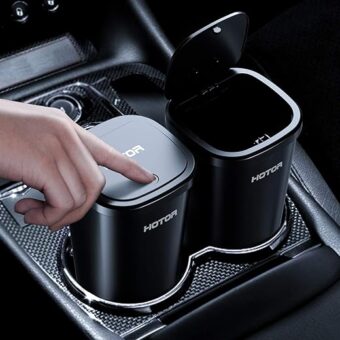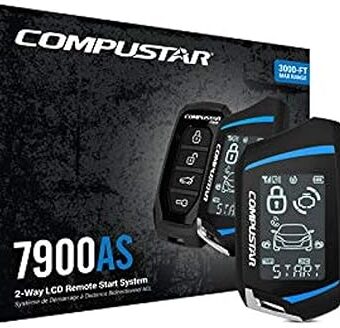Did you know that the average car contains over 100 different types of bacteria, many of which can thrive in the carpets and upholstery? If your car carpets are looking dingy and smelling less than fresh, you’re not alone, and a simple vacuum may not be enough to restore them to their former glory. This step-by-step guide on “How to Deep Clean Car Carpets After Vacuuming” will provide you with essential techniques and tips to eliminate stubborn stains, unpleasant odors, and embedded dirt, ensuring your vehicle’s interior is not only clean but also a healthier environment for you and your passengers. Get ready to transform your car into a pristine space that feels as good as new!
Gather Your Supplies
Gather all necessary cleaning supplies. Ensure you have a carpet cleaner or shampoo ready for treating stains. Collect a scrubbing brush and a set of microfiber cloths for effective scrubbing and drying. Fill a bucket with warm water to help loosen dirt and grime. If available, grab a wet/dry vacuum to efficiently remove excess moisture and debris from the carpet.
Remove Floor Mats
Remove floor mats from your car to clean them separately. This step creates better access to the carpets underneath, allowing you to vacuum and scrub more effectively. For example, if your mats are heavily soiled from muddy shoes or spills, taking them out makes it easier to tackle the mess directly on your vehicle’s carpets. Shake or bang the mats against a hard surface to dislodge dirt before cleaning them with soap and water or a dedicated cleaner.
Spot Clean Stains
Identify any stains on your carpets by closely inspecting the areas that frequently see spills or tracked-in dirt. Spot treat these stains by mixing equal parts water and vinegar in a spray bottle or using a commercial carpet cleaner. Apply the solution directly onto the stained area, covering it generously, and let it sit for five to ten minutes to penetrate the stain. Afterward, blot the area gently with a microfiber cloth, using a dabbing motion to lift the stain without rubbing, which could spread it further. If you notice a stubborn stain like red wine or coffee, repeat the process until the stain is removed, ensuring your carpet stays looking fresh and clean.
Prepare the Carpet Cleaner
Read the instructions on your chosen carpet cleaning solution carefully. Measure the recommended amount of carpet shampoo and pour it into a clean bucket. Fill the bucket with water up to the level specified on the label, ensuring you achieve the right mixture. Stir the solution gently until it is well combined and foamy.
Scrub the Carpets
Dip the scrubbing brush into the cleaning solution, ensuring it’s well-saturated but not dripping. Scrub the carpets in circular motions, starting in one small section and working your way across the area. Maintain a gentle pressure to prevent damage to the fibers, allowing the cleaning solution to penetrate and lift dirt effectively. Move methodically, overlapping each circular stroke slightly to ensure thorough coverage without missing spots.
Rinse the Carpets
Spray the carpets lightly with clean water, ensuring you evenly cover the area where you scrubbed. Alternatively, use a damp cloth to gently wipe the surface, absorbing any remaining cleaning solution. Focus on avoiding excess moisture; it’s crucial not to soak the carpets as too much water can encourage mold and mildew growth. After rinsing, allow the carpet to dry thoroughly by opening windows or using fans to improve air circulation.
Extract Excess Water
Use a wet/dry vacuum to extract as much water as possible from your carpets. Start at one corner and slowly move the vacuum across the carpet in overlapping passes to ensure you don’t miss any areas. If you don’t have a wet/dry vacuum, grab clean, dry microfiber cloths. Blot the wet areas by pressing the cloths against the carpet, absorbing any remaining moisture; change cloths frequently to maximize absorption.
Dry the Carpets
Allow the carpets to air dry completely before replacing the floor mats. Open the windows to let fresh air circulate, which helps accelerate the drying process. If the weather is not favorable, position a fan near the carpet to promote airflow. Keep an eye on the drying time and ensure the carpets feel dry to the touch before resuming normal activities.
Final Steps for a Spotless Finish
In conclusion, deep cleaning your car carpets after vacuuming is a straightforward process that can significantly enhance your vehicle’s interior. By gathering the right supplies, spot cleaning, scrubbing with a carpet cleaner, rinsing, extracting excess water, and ensuring proper drying, you’ll be well on your way to achieving a pristine and fresh environment in your car. With a little effort, you can keep those carpets looking great and prolong their lifespan, making every journey more enjoyable for you and your passengers. Happy cleaning!
Essential Supplies Needed
Essential Techniques
Step-by-Step Guide to Effectively Vacuuming Your Car’s Carpet
- Gather Your Supplies: Start by collecting your vacuum cleaner or a portable car vacuum, along with any attachments like crevice tools or brushes that can help reach tight spots
- Remove Loose Items: Before you vacuum, take out any items from your car that might hinder the cleaning process. This includes trash, floor mats, and personal belongings
- Shake Out Floor Mats: If your car has removable floor mats, take them out and shake off any dirt and debris. You can also give them a quick beat against a hard surface to loosen stubborn particles
- Vacuum in Sections: Begin vacuuming the carpet in sections. Use your vacuum’s crevice tool to reach under the seats and in between cracks. Don’t forget to pay attention to the edges and corners of the carpet where dirt often collects
- Finish with the Mats: After vacuuming the carpet, give your floor mats a thorough vacuuming as well. If they are particularly dirty, consider washing them with soap and water after vacuuming for an extra clean
- By following these steps, you’ll have a clean car carpet in no time! Happy cleaning!
Essential Steps for a Spotless Car Carpet
Yes, you can definitely use a wet vacuum for cleaning car carpets! Wet vacuums are designed to handle liquid spills and can effectively extract dirt, grime, and moisture from various surfaces, including car carpets. Just make sure to follow a few tips:
- Pre-clean: Vacuum any loose debris before using the wet vacuum to make the process more efficient.
- Use the right attachments: Some wet vacuums come with specific attachments for upholstery, which can help you get into tight spaces and along seams.
- Test a small area: Before treating the entire carpet, consider testing the wet vacuum on a small, inconspicuous area to ensure it doesn’t cause any damage or discoloration.
- Dry thoroughly: After cleaning, ensure that the carpets dry completely to prevent mold or mildew from developing.
So, grab your wet vacuum and get ready to give those car carpets a thorough clean!
When deciding whether to use a handheld vacuum or a regular vacuum for your car’s carpet, there are a few factors to consider that can help you make the best choice.
- Portability: Handheld vacuums are lightweight and easy to maneuver, making them ideal for reaching tight spaces and corners in your car. They’re also typically cordless, which gives you the freedom to move around without worrying about power outlets or cords getting in the way.
- Suction Power: Regular vacuums usually have more powerful motors, which can provide better suction for deep cleaning. If your car’s carpets have tough dirt or pet hair embedded in them, a regular vacuum with a hose and attachments might be more effective.
- Attachments: Most regular vacuums come with a variety of attachments that can help you clean different surfaces and tight spots. If your regular vacuum has a small nozzle attachment, it can be quite effective for car interiors.
- Usage Frequency: If you find yourself cleaning your car often, a handheld vacuum might be more convenient for quick clean-ups. On the other hand, if you only clean your car occasionally and want a deep clean, a regular vacuum may be more appropriate.
In summary, if you need something quick and easy for routine clean-ups, a handheld vacuum is a great choice. If you’re looking for deeper cleaning power and don’t mind a bit more effort, a regular vacuum would be the way to go. Ultimately, it depends on your specific needs and preferences!






Can anyone suggest a good carpet cleaner that’s safe for pets? I want to make sure whatever I use won’t harm my dog! Any recommendations?
You might want to check out the Eco-Soft Carpet Cleaner. It’s pet-friendly and does a great job on stains. Let us know if you try it!
I just deep cleaned my car carpets using this guide and wow, what a difference! The scrubbing part was super satisfying, and I didn’t realize how much dirt was hiding. Definitely recommend taking your time with the spot cleaning!
That’s awesome to hear! It’s so rewarding to see the results after a good clean. Thanks for sharing your experience!
I’d love some extra tips on vacuuming before deep cleaning! What’s the best way to tackle those hard-to-reach spots in the car? Any specific tools you all recommend?
For hard-to-reach spots, a vacuum with a crevice tool is your best friend! The Black+Decker Dustbuster is super handy for tight spaces. Happy cleaning!
Thanks for sharing your tip! The Bissell SpotBot is a fantastic choice for tough stains. It’s great to hear it’s working well for you! Anyone else have experiences with different cleaners?
I’ve seen some people use steam cleaners instead of scrubbing, and they swear by it! Has anyone tried that method? Would love to hear how it compares to this guide.
Steam cleaners can be a great alternative! They use heat to lift dirt and can be easier on your back compared to scrubbing. If anyone has tried it, please share your experience!
So I followed this guide, but I still had some stubborn stains that wouldn’t budge. I ended up using a mix of vinegar and water as a spot cleaner, and it worked wonders! Just a heads up for anyone struggling!
That’s a fantastic tip! Vinegar is great for tackling stubborn stains. Thanks for sharing your success with that method!
I actually use a different carpet cleaner than what’s suggested here. I swear by the Bissell SpotBot! It really gets into those tough stains without me having to scrub too hard. Just set it down and let it do its thing! Has anyone else tried it?
Quick question about the rinsing step! Do you need to use plain water, or can I mix in some fabric softener for a nice scent? I feel like my car could use a bit of freshness!
Great question! It’s best to stick with plain water for rinsing to avoid any residue. You can always use an air freshener after cleaning for that fresh scent!